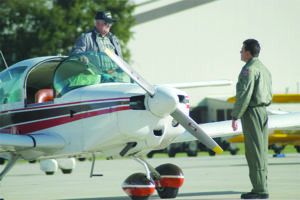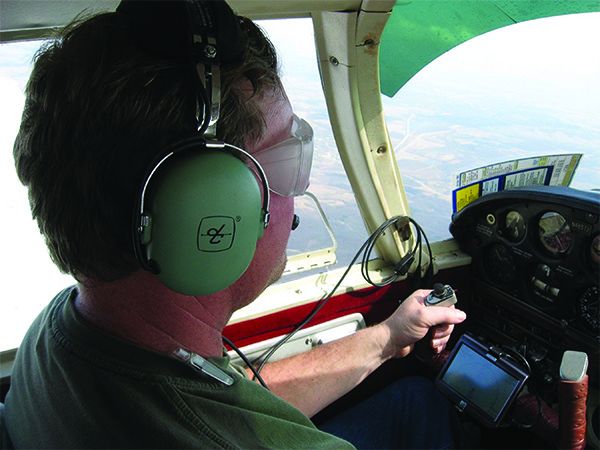A December 1, 2020, article published by Bloomberg Quint, “Rusty Pilots Making Flying Errors Is Next Aviation Headache,” highlighted a September 15, 2020, event involving an Indonesian Airbus A330 that experienced a runway excursion on landing. According to the article, an investigation found “the pilot had flown less than three hours in the previous 90 days. The first officer hadn’t flown at all since Feb. 1.” Because the carrier doesn’t have a simulator for the A330 and trains its pilots at third-party facilities, “Covid-19 travel restrictions have made those harder to access.”
While airline pilots have different recency of experience requirements and options than others, the basic problem of not flying enough to remain proficient isn’t something new to general aviation. The ongoing pandemic has highlighted the need for regular training by all pilots, and it’s likely many of us are not getting the same amount of instruction, hood work or sim time as we have in the past, even if we’re flying enough to legally stay current. If we can’t get the same amount of training as before, how can we ensure we’re as good as when we could? What can we do to manage the additional risk?
ADMIT THERE’S A PROBLEM
If we can’t get the regular training we need and have come to expect, grounding ourselves often is unacceptable. That said, refusing to acknowledge we need periodic training has been a characteristic of general aviation pilots for decades. It’s not realistic but is one of the reasons the flight review and instrument currency requirements exist, while the accident record shows that regular training continues to be necessary.
On the other hand, there are things we can do to mitigate the additional risk to which we’re exposed from any inability to obtain quality recurrent training. As with any other challenge we may face in our personal and professional lives, one of the first steps to take is admitting there’s a problem. Was your last ILS a little sloppy? Maybe you were a little high and fast on your last few landings? Did you forget how to enter a specific mode on your GPS navigator, or fail to enrichen the mixture for takeoff? Those are signs of accumulated rust. Embrace the horror and come up with a roll-your-own training plan. And accept that you may have to dial back your espectations.
PROFICIENCY PLANNING
Once we admit there’s a problem, we need to identify its components. It could be instrument procedures, basic airmanship or something else. Maybe you just haven’t flown lately and you’re reluctant without someone watching from the right seat. In our June 2020 issue, we explored the various online and home-study resources available, as well as PC-based simulation. Those remain good options for those of us needing some confidence before strapping on an airplane again.
Once you find what confidence was missing and presuming you’re still legal for VFR, go fly; there are a lot of proficiency exercises you can do on your own. But do it with a purpose, and don’t grade yourself on a curve. Have a plan, and get a weather briefing.
A good place to start is with ground-reference maneuvers. If you’re familiar with chandelles and lazy-8s, work them into your routine. If not, perform some turning climbs and descents, along with power changes. At least until you rebuild some confidence—and are confident you can keep the ball centered—it’s probably best to stay away from practicing stalls. Keep an eye out for traffic at all times and perform clearing turns before starting you maneuvers. Have plenty of altitude and know what you’re going to do before you take off.
Landings may be another area in which you feel rusty. If you’re flying a lot, this usually takes care of itself. If that’s not good enough for you, find a quiet nearby airport with plenty of runway and knock yourself out.
If you haven’t flown IFR lately, get out and fly some approaches, including holding patterns, in good VFR. You want to focus on the procedures no instructor has coached you on lately, like self-briefing the approach, setting up the avionics and managing configuration changes. Don’t forget your CTAF calls at non-towered airports and keep your head up. Absolutely do not use a view-limiting device without a safety pilot.
MANAGING EXPECTATIONS

Sometimes, we recognize our rust layer only can be removed with some one-on-one training. If that’s not in the cards, something has to give, and dialing down our expectations may be the most reasonable response to the challenge. For example, a trip or three around the patch at Non-Towered County is perfectly acceptable but popping into a familiar Class B International at rush hour, even VFR, won’t be the smartest thing you ever did.
It’s often hard to accept we can’t do something we’ve done before simply because we haven’t received enough recent training. But consider how much additional risk you’re accepting when you tackle a complicated operation knowing you haven’t practiced it lately. Yes, you can roll the dice, which may be more loaded now than back when you were Ace of the Base. Or you can cancel the planned flight, possibly admitting that you’re behind on your training. Doing so might annoy others, but at least you’ll be around to get more training, and ignore the annoyed.
UNTIL THEN…
If you haven’t gotten some training recently but are still legal to fly, you may need to lower your expectations. Choose calm, severe-clear days. Be aware that others may have the same idea, and more rust. If you’re not even comfortable doing that, go find some webinars or other training resources. The FAA’s Safety Team (FAAST) web site (faasafety.gov) is a great place to start. The material is free, FAA-approved and counts toward WINGS credit. But be careful—you might learn something.




